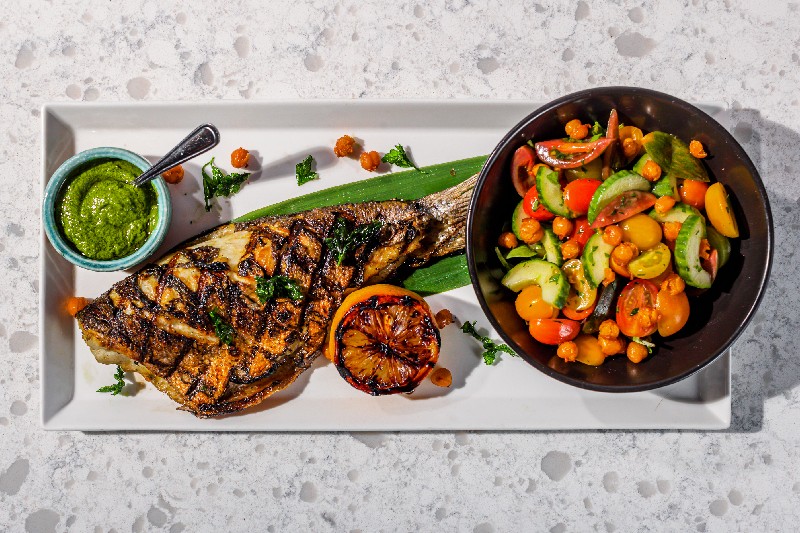Let’s say it’s a gorgeous late spring/early summer’s day, and you’re sitting outside at brunch with a good friend. A board of snappy cheese is on the way. What is the perfect drink for this moment? In my experience, it’s a glass of Prosecco. Prosecco holds an exalted place of all the budget-friendly sparkling wines: Crisp, with notes of honeysuckle, orchard fruits, and citrus – what could be more delightful? But what is Prosecco, exactly? Where does it come from, and how is it made? What sets it apart from its bubbly cousin, Champagne?
The tl;dr is that Prosecco is a sparkling wine from northeastern Italy – more specifically, the regions of Friuli and Veneto. In terms of carbonation, it tends to be what the Italians call “frizzante” rather than “spumante” (that is, fizzy rather than sparkling), has a high acidity, and can be dry to medium-sweet. As you can imagine, Prosecco has been popular for a long time. “Ed or ora immolarmi voglio il becco con quel meloaromatico Prosecco,” the Italian poet Aureliano Acanti wrote in 1754. (“And just now I wish to sacrifice my mouth to that apple-aromatic Prosecco.” I told you people love this stuff.) Oh – and following through on the brunch setting: Add a splash of white peach juice to a glass of Prosecco, and you get a Bellini. Add orange juice, and you get the perfect mimosa. Let’s look more closely at this versatile, food-friendly wine.
How is Prosecco made?

Prosecco’s principal varietal is the Glera grape, a long-growing, sweet, and low-acid fruit. Many other grapes can be used to blend (including other white grapes like verdiso, bianchetta trevigiana, and chardonnay- or pinot noir to make Prosecco rosé). Still, governmental regulations limit their presence to only 15% of the finished product.
In Italy, Prosecco is vinified in the Martinotti method (known elsewhere as the Charmat method). In this process, secondary fermentation takes place in large steel tanks, carbonating the wine through atmospheric pressure created by the yeast’s by-product of carbon dioxide. This process not only preserves the fruit-forward freshness of the wine but also gives it that soft spumante effervescence (about three atmospheres).
There is one exception to this rule: Prosecco Col Fondo not only undergoes secondary fermentation in the bottle, but it’s also neither filtered nor disgorged. The result is usually described as cloudy and funky, with a little sweetness and a pleasingly bitter finish. (Col Fondo translates to “with the bottom” because every bottle has a layer of yeast and sediment.) This Prosecco-making process yields a relatively low-alcohol, zingy wine bursting with aromas and flavors of white flowers, green apple, pear, honeydew, banana, and lemon.
Prosecco wines are meant to be enjoyed young; they aren’t designed to age or be cellared. Spumante Prosecco is also available (the rosé is always spumante), and there’s even a non-sparkling Prosecco style called tranquillo, which I haven’t tried but want to now.
According to the Prosecco DOC Consortium, the wine is especially popular outside Italy. The group estimates that 81% of the market for Prosecco is outside Italy.
Pairing foods with Prosecco

Because of its high acidity and low alcohol content, Prosecco is wonderfully versatile when paired with food. Serve it as an apéritif with the previously mentioned cheese board. I also love to pair it with creamy pasta and egg dishes, cured meats, white meats, pork, grilled seafood, and shellfish.
That might sound like you’re on safe ground pairing Prosecco with dishes native to its region of origin, but don’t feel limited to just that. Sweeter Prosecco (that is to say, those which bear the description extra dry or dry) pair wonderfully well with spicy South Asian dishes, from Thai curries to Vietnamese Bánh mi. Oh, and in between courses? A glass of Prosecco makes a marvelous palate cleanser all by itself.
Prosecco hierarchy: From budget to bougie

I started by calling Prosecco an inexpensive sparkling wine – and while this is generally true, there is a hierarchy of these wines. “Prosecco is a protected name place,” says American sommelier and winemaker André Houston Mack, “meaning that there’s laws and regulations which give it a standard of quality.” The most budget-friendly of these is simply known as Prosecco DOC. “DOC” stands for Denominazione di Origine Controllata; this lets you know the Prosecco was produced in the correct nine provinces of the Veneto and Friuli regions and created by the proper processes.
One rung up the ladder of Prosecco quality is the Prosecco Conegliano Valdobbiadene Superiore DOCG (which stands for Denominazione di Origine Controllata e Garantita). Wines bearing this label come from select vineyards in Conegliano and Valdobbiadene, while Colli Asolani DOCG hail from the hills of Asolo.
Oh, but it gets bougier: Prosecco Conegliano Valdobbiadene Superiore Rive can only be made with grapes grown in 43 select vineyards. The fanciest version doesn’t even have Prosecco on the label, but is simply known as Valdobbiadene Superiore di Cartizze DOCG. It’s produced solely from vineyards planted on the microregion of Cartizze hill, each of which can sell for $1 million per hectare. Even so, a bottle of this stuff shouldn’t set you back more than $60.
How to serve Prosecco

You should serve Prosecco in a tulip glass rather than a Champagne flute. This allows it to show off its gorgeous aromas. Most Prosecco should be served cold (between 38 and 45 degrees Fahrenheit), although higher-quality ones will open up at slightly higher temperatures (around 55 degrees Fahrenheit).




